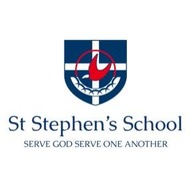
(View Complete Item Description)
In this 8 eight-week module, students explore the experiences of people of Southern Sudan during and after the Second Sudanese Civil War. They build proficiency in using textual evidence to support ideas in their writing, both in shorter responses and in an extended essay. In Unit 1, students begin the novel A Long Walk to Water (720L) by Linda Sue Park. Students will read closely to practice citing evidence and drawing inferences from this compelling text as they begin to analyze and contrast the points of view of the two central characters, Salva and Nya. They also will read informational text to gather evidence on the perspectives of the Dinka and Nuer tribes of Southern Sudan. In Unit 2, students will read the remainder of the novel, focusing on the commonalities between Salva and Nya in relation to the novel’s theme: how individuals survive in challenging environments. (The main characters’ journeys are fraught with challenges imposed by the environment, including the lack of safe drinking water, threats posed by animals, and the constant scarcity of food. They are also challenged by political and social environments.). As in Unit 1, students will read this literature closely alongside complex informational texts (focusing on background on Sudan and factual accounts of the experiences of refugees from the Second Sudanese Civil War). Unit 2 culminates with a literary analysis essay about the theme of survival. Unit 3 brings students back to a deep exploration of character and point of view: students will combine their research about Sudan with specific quotes from A Long Walk to Water as they craft a two-voice poem, comparing and contrasting the points of view of the two main characters, Salva and Nya,. The two-voice poem gives students an opportunity to use both their analysis of the characters and theme in the novel and their research about the experiences of the people of Southern Sudan during the Second Sudanese Civil War.
Find the rest of the EngageNY ELA resources at https://archive.org/details/engageny-ela-archive .
Material Type:
Module




















